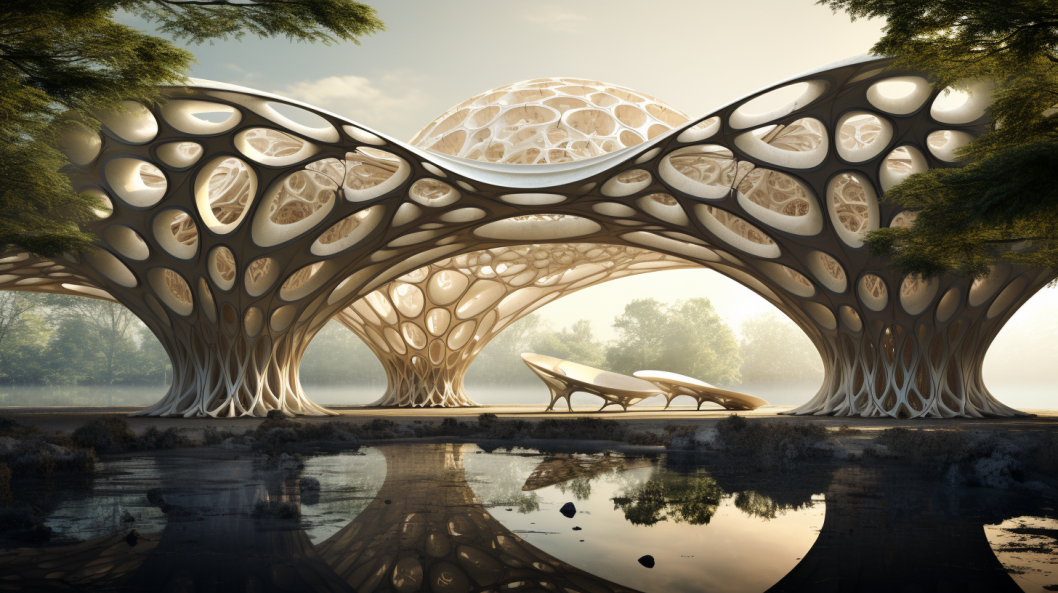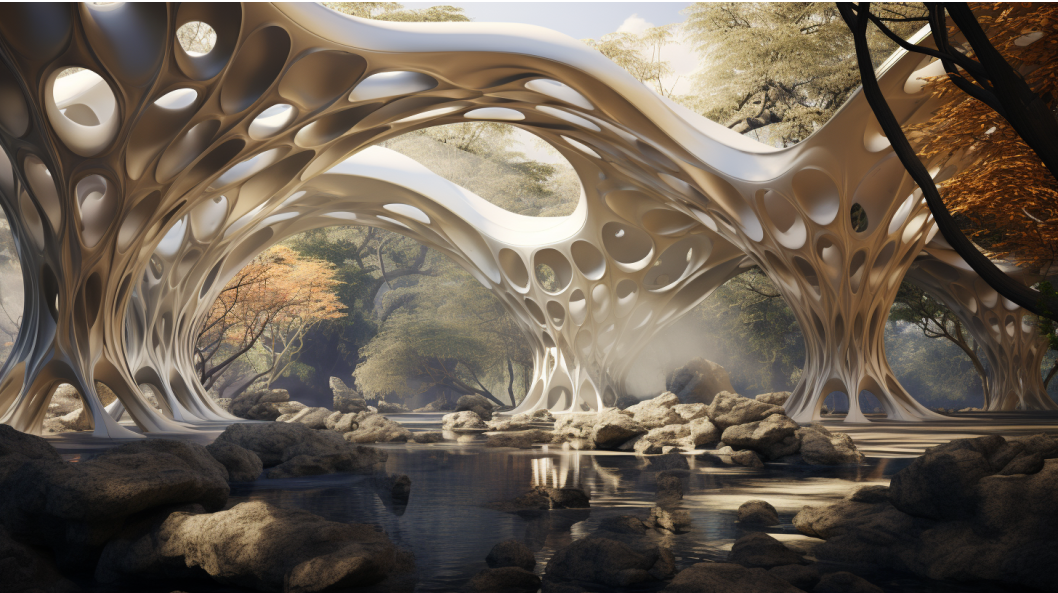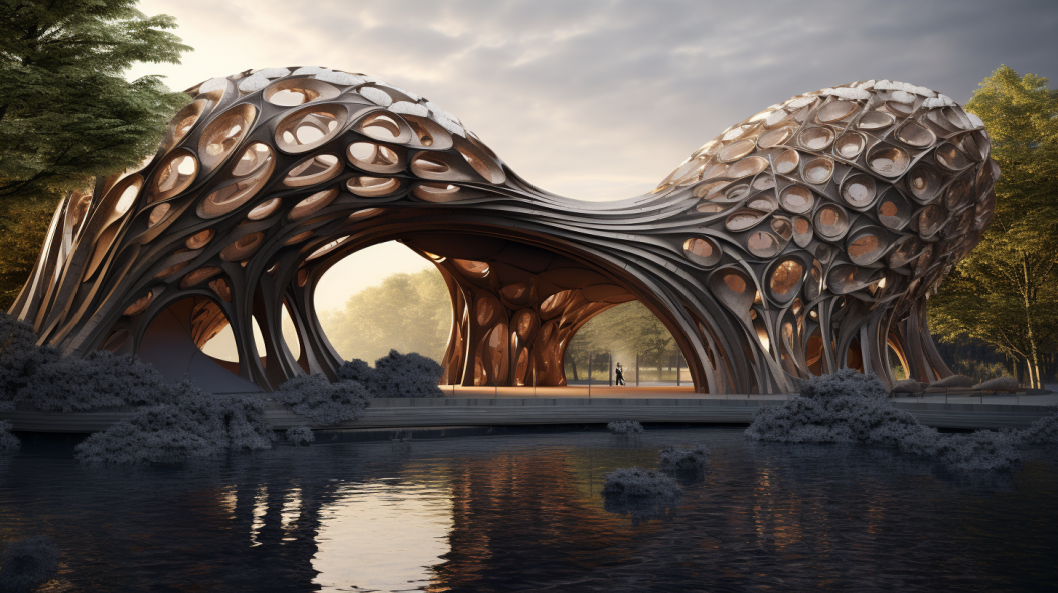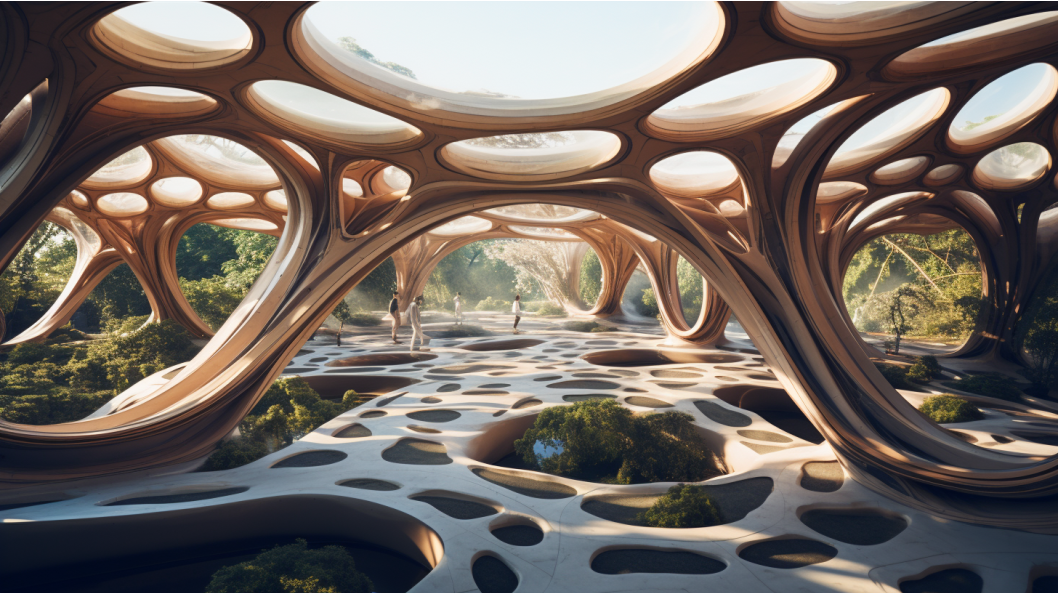In a world where urban sprawls persistently devour natural environments, the essential call to conserve our ecosystems has never been so stark. As cities burgeon, enveloping lush landscapes in concrete jungles, the perilous trajectory towards environmental degradation unfurls. Symbiotic structures that seamlessly amalgamate the built and natural environments stand as pioneering benchmarks in the audacious journey towards sustainable development. Herein, parametric design emerges as a pivotal player, offering solutions that embrace aesthetic, functional, and ecological synergies.

The Essence of Symbiotic Structures
Symbiotic structures embody the philosophy of coexistence between architectural elements and natural entities. Unlike traditional structures that impose upon and dominate the landscapes in which they reside, these constructions enmesh themselves within the living, breathing ecosystems, proffering mutual benefits to both the human and environmental domains. The objective is to craft spaces that respect, celebrate, and amplify the vitality and resilience of the natural world while addressing the anthropogenic needs for shelter, work, and recreation.
Parametric Design: A Catalyst for Harmonization
Parametric design stands on the forefront of architectural evolution, offering dynamic solutions that weave the threads of functionality and aesthetics with ecological mindfulness. Through algorithms and computational geometry, designers generate models where distinct parameters can be altered to observe and optimize various outcomes. This meticulous manipulation of elements enables architects and engineers to sculpt structures that not only respond to, but also enhance, the environments in which they are situated.

The Natural Integration
An exciting exploration within the realm of parametric design involves creating structures that emulate natural forms and processes. The mimicry of natural phenomena, often referred to as biomimicry, encompasses the adaptation of elements like temperature regulation from termite mounds or structural resilience from honeycomb designs. The intrinsic algorithms in parametric design facilitate the recreation of these biologically inspired forms, fostering an intimate fusion between built structures and the enveloping natural world. This, in turn, minimizes disruption, promotes ecological integrity, and engenders an aesthetic that feels organically attuned to the local landscape.
Adaptive and Responsive
An impactful dimension of parametrically designed symbiotic structures is their inherent capability to be adaptive and responsive to local environmental conditions. Through the integration of sensor technologies and adaptive materials, buildings can respond in real-time to fluctuations in light, temperature, and wind patterns, ensuring optimal energy utilization and minimal environmental impact. This dynamic adaptability fosters a physical and visual continuity between the built form and its natural surroundings, weaving a tapestry where architecture and environment converse in an unbroken dialogue.
Eco-Conscious Urbanism
Cities are not just conglomerates of human activity but are potential hotspots for biodiversity and conservation when architected mindfully. Parametric design affords urban planners and architects the tools to design buildings and infrastructures that integrate green spaces, urban farms, and wildlife corridors, therefore enabling urban areas to support, rather than stifle, local biodiversity. The intentional incorporation of nature within urban settings curates a symbiotic relation where cities provide habitats for various species, while humans reap the benefits of improved air quality, aesthetic greenery, and heightened psychological well-being.

Future Trajectories: Building Towards a Sustainable Tomorrow
As our exploration into the potentialities of symbiotic structures through parametric design deepens, a future where buildings harmonize with, rather than antagonize, natural environments glimmers on the horizon. Ethical and eco-conscious architecture transcends merely being a trend, blossoming instead into a fundamental pillar upon which our future societies will be built.
Moreover, as technological advancements, such as artificial intelligence and machine learning, continue to entwine themselves within the architectural realm, the possibilities for creating even more intelligent, adaptive, and truly symbiotic structures expand exponentially.
In an epoch where climate crises loom large and biodiversity teeters precariously, the amalgamation of built and natural environments through symbiotic structures is not merely a visionary pursuit but a palpable necessity. Through the prism of parametric design, architects, and designers are empowered to forge a future where humanity and nature flourish in an intertwined existence, crafting a narrative where each sustains and enriches the other in a perpetual dance of harmonious coexistence.
In sum, symbiotic structures foster a future where we, as custodians of our planet, actively contribute towards a world where technological, architectural, and environmental trajectories converge to cultivate a reality defined by balance, sustainability, and harmonious co-existence between the built and natural worlds. This unity of purpose, underlined by innovative approaches like parametric design, illumines a path forward that is not only sustainable but also profoundly attuned to the intrinsic, invaluable rhythms of the earth and its myriad of life forms.

Welcome to planksip® – your go-to media outlet for top-notch content creation. Get content like this for just $200 per week!
